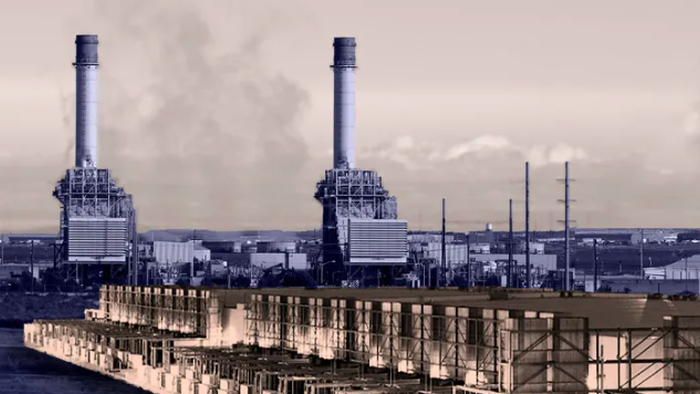On Wednesday, readers were presented with a comprehensive breakdown detailing the immense funding required for the AI data-center boom. It is estimated that a whopping $5 trillion in investment is needed, with Washington expected to contribute at least $1 trillion. In addition, it was highlighted that the U.S. currently faces a shortage of 44 nuclear power plants, posing a significant challenge for the ongoing cycle.
The major bottleneck that could potentially disrupt the entire AI boom cycle is the issue of power. To gain deeper insights into the current state of the grid’s structure, data center demand, load growth, power bill concerns, and other critical topics, Goldman analysts led by Carly Davenport shared key findings from the recent EEI Financial Conference in Hollywood, Florida.
Davenport reported that the sentiment among utilities sector players was largely positive, driven by optimism surrounding the acceleration of load growth, increased capital spending plans, and a brighter earnings outlook leading up to 2026. Investors are now keen on identifying utilities that have safeguards in place against the risks associated with data center growth and those that are actively addressing challenges related to labor, supply chain, and affordability.
Discussions during the conference highlighted a growing bullishness towards NextEra Energy and Sempra, while concerns regarding near-term political and regulatory developments were raised for Public Service Enterprise Group, Southern Company, and PG&E Corp.
Focus on changes in regulatory landscapes. Various utilities are navigating significant shifts in state-level policies and ongoing rate case activities. For instance, in New Jersey, the transition to Governor-elect Sherrill’s administration and anticipated changes within the BPU are top of mind. PEG is exploring mechanisms like ZECs to help mitigate customer bills, aligning with the new administration’s priorities. EXC is on track with its NJ rate case at ACE, while FE is awaiting clarity on BPU composition for upcoming rate case filings at JCP&L. In other regions, ES is seeking regulatory approvals for its Aquarion sale and storm cost securitization in CT, with a focus on a balanced collaboration between utilities and regulators. SO anticipates a potentially noisy 2026 due to state-wide elections but plans to engage with newly elected commissioners on utility economics and affordability.
Potential for positive capex revisions. SRE foresees significant upside in capital plans at Oncor, driven by Permian transmission projects and data center load growth. DUK is preparing to announce a robust capital plan, exploring financing options for LNG solutions and transmission investments. XEL aims for a 9% EPS CAGR through 2030, with substantial upside in generation and transmission. FE benefits from PJM open window projects and growth opportunities in West Virginia. SO anticipates capex growth from demand in Georgia and FERC natural gas pipelines.
State involvement in PJM reform. Utilities are advocating for increased state participation in reforming the PJM market to address market inefficiencies and enhance resource adequacy. EXC, PEG, and FE are emphasizing the need for state-led solutions to ensure reliability standards, emissions targets, and affordability metrics. West Virginia’s proactive approach to generation and energy security is noted, highlighting the trend of states taking a more active role in guiding generation development.
Affordability and bill transparency. Affordability remains a key concern for utilities as they strive to meet growing power demands. Management discussions have centered around strategies to reduce customer bills, such as refunding ZECs and promoting bill transparency. Utilities are emphasizing the importance of clarity on bill inflation targets to address customer and regulator concerns.
EPC relationships for capital plan execution. Utilities are prioritizing long-term Engineering, Procurement, and Construction (EPC) partnerships to streamline capital plan execution and manage supply chain constraints. AEP, DUK, XEL, and WEC are leveraging strategic EPC relationships to standardize operations and ensure a skilled labor force for their projects.
Wildfire policy reform phase 2 in progress. California’s wildfire policy reform is advancing, with IOUs engaging collaboratively in the process. Key stakeholders are working towards reducing wildfire risk and ensuring predictable claims recovery. Credit rating agencies are closely monitoring the progress, awaiting legislative outcomes for a comprehensive assessment of the benefits.
Focus on identifying high-confidence load. Investors are increasingly focused on securing firm commitments within utility pipelines. Companies are implementing measures such as upfront deposits and take-or-pay contracts to identify high-confidence load. Utilities are adapting to ensure reliable power supply for customers.
Customer and financial protections for data center deals. Utilities are prioritizing protections in data center contracts to ensure predictable cash flows. Terms such as minimum take provisions and termination fees are key considerations to mitigate risks associated with data center projects.
Generation technologies for meeting demand. Renewables and nuclear technologies are under scrutiny as utilities seek to meet growing power demands. Companies are exploring safe-harbored projects and innovative solutions to address the evolving energy landscape.
ZeroHedge Pro subscribers can access the full note here for additional insights from the EEI conference on the intersection of data centers and power grids.

